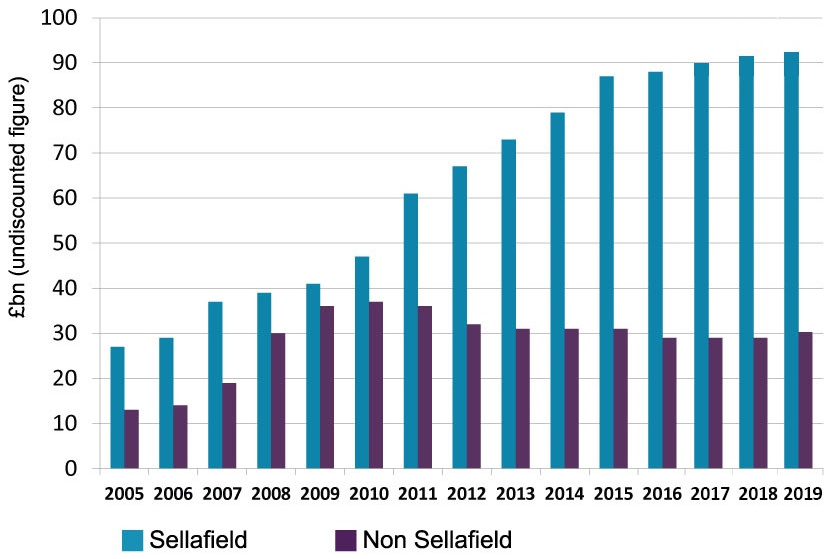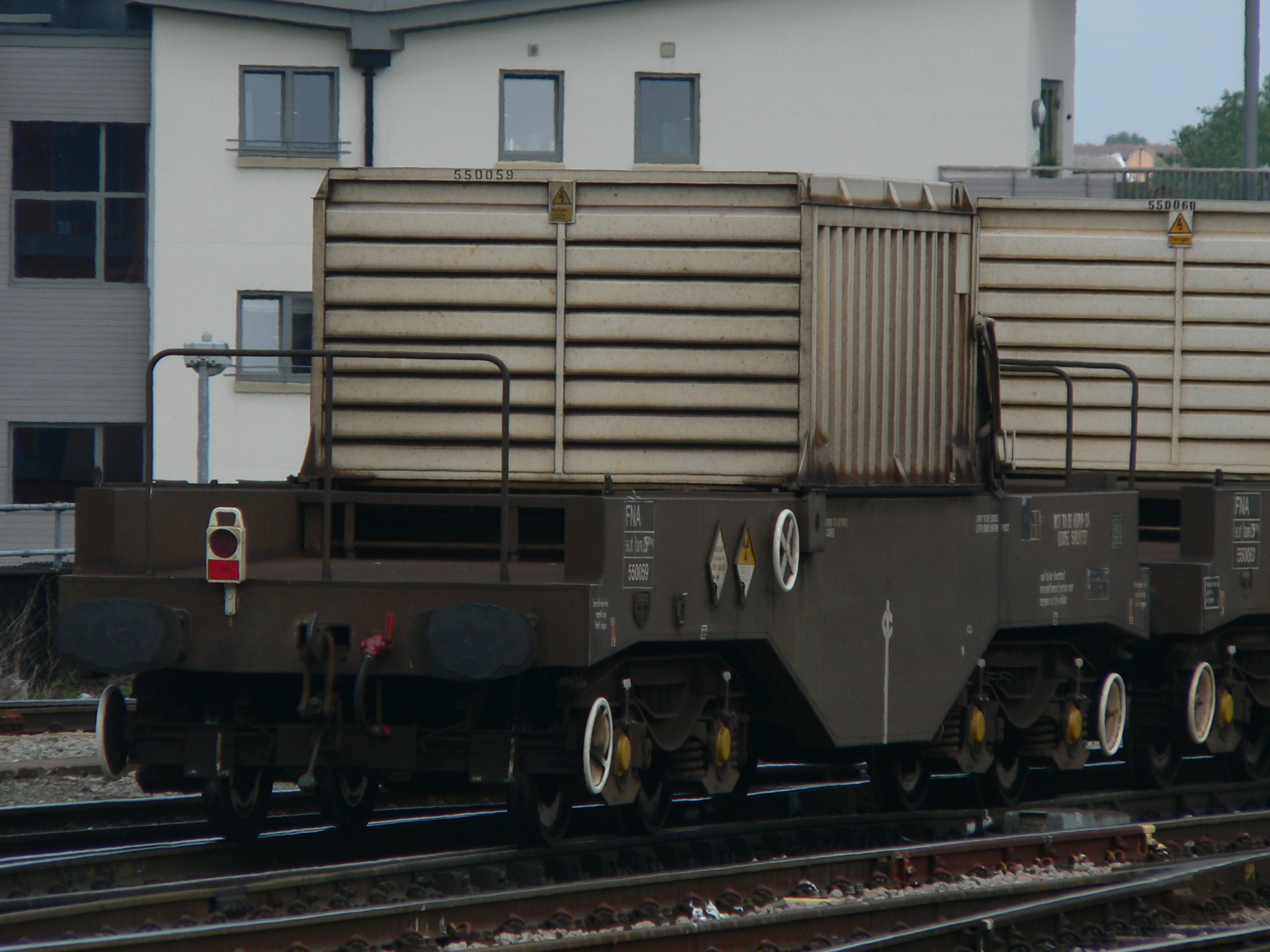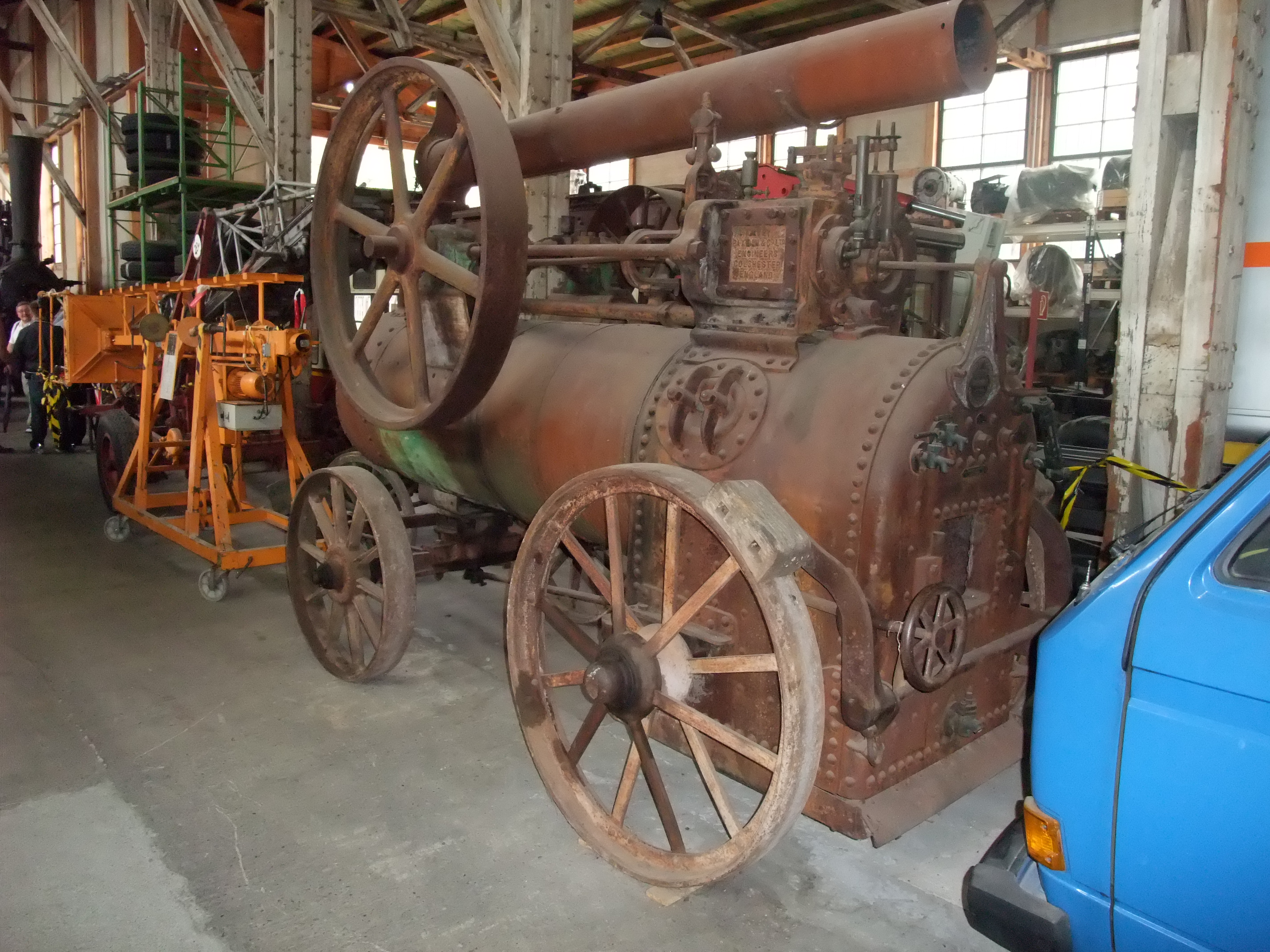|
Trawsfynydd Nuclear Power Station
Trawsfynydd nuclear power station () is a former Magnox nuclear power station situated in Snowdonia National Park in Gwynedd, Wales. The plant, which became operational in 1965, was the only nuclear power station in the UK to be built inland, with cooling water that was taken from the artificial Llyn Trawsfynydd reservoir which also supplies the hydro-electric Maentwrog power station. It was closed in 1991. Its ongoing decommissioning by Nuclear Restoration Services was expected to take almost 100years, but in 2021 the Welsh government arranged for the power station to be redeveloped using small-scale reactors. History The power station, which takes its name from the nearby village of Trawsfynydd, was designed by Basil Spence. The construction, which was undertaken by a consortium involving Crompton Parkinson, International Combustion, Fairey Engineering and Richardsons Westgarth, and known as the Atomic Power Constructions (APC), began in July 1959, and both of the reactors ... [...More Info...] [...Related Items...] OR: [Wikipedia] [Google] [Baidu] |
Wales
Wales ( ) is a Countries of the United Kingdom, country that is part of the United Kingdom. It is bordered by the Irish Sea to the north and west, England to the England–Wales border, east, the Bristol Channel to the south, and the Celtic Sea to the south-west. , it had a population of 3.2 million. It has a total area of and over of Coastline of Wales, coastline. It is largely mountainous with its higher peaks in the north and central areas, including Snowdon (), its highest summit. The country lies within the Temperate climate, north temperate zone and has a changeable, Oceanic climate, maritime climate. Its capital and largest city is Cardiff. A distinct Culture of Wales, Welsh culture emerged among the Celtic Britons after the End of Roman rule in Britain, Roman withdrawal from Britain in the 5th century, and Wales was briefly united under Gruffudd ap Llywelyn in 1055. After over 200 years of war, the Conquest of Wales by Edward I, conquest of Wales by King Edward I o ... [...More Info...] [...Related Items...] OR: [Wikipedia] [Google] [Baidu] |
Fairey Aviation Company
The Fairey Aviation Company Limited was a British aircraft manufacturer of the first half of the 20th century based in Hayes in Middlesex and Heaton Chapel and RAF Ringway in Cheshire that designed important military aircraft, including the Fairey III family, the Swordfish, Firefly, and Gannet. It had a strong presence in the supply of naval aircraft, and also built bombers for the RAF. After World War II, the company diversified into mechanical engineering and boat-building. The aircraft manufacturing arm was taken over by Westland Aircraft in 1960. Following a series of mergers and takeovers, the principal successor businesses to the company became FBM Babcock Marine, Spectris, and WFEL (formerly Williams Fairey Engineering Limited), the latter manufacturing portable bridges. History Founded in 1915 by Charles Richard Fairey (later Sir Richard Fairey) and Belgian engineer Ernest Oscar Tips on their departure from Short Brothers, the company first built under licence o ... [...More Info...] [...Related Items...] OR: [Wikipedia] [Google] [Baidu] |
Heritage Railway
A heritage railway or heritage railroad (U.S. usage) is a railway operated as living history to re-create or preserve railway scenes of the past. Heritage railways are often old railway lines preserved in a state depicting a period (or periods) in the history of rail transport. Definition The British Office of Rail and Road defines heritage railways as follows:...'lines of local interest', museum railways or tourist railways that have retained or assumed the character and appearance and operating practices of railways of former times. Several lines that operate in isolation provide genuine transport facilities, providing community links. Most lines constitute tourist or educational attractions in their own right. Much of the rolling stock and other equipment used on these systems is original and is of historic value in its own right. Many systems aim to replicate both the look and operating practices of historic former railways companies. Infrastructure Heritage railway li ... [...More Info...] [...Related Items...] OR: [Wikipedia] [Google] [Baidu] |
Sellafield
Sellafield, formerly known as Windscale, is a large multi-function nuclear site close to Seascale on the coast of Cumbria, England. As of August 2022, primary activities are nuclear waste storage, nuclear waste processing and storage and nuclear decommissioning. Former activities included nuclear power generation from 1956 to 2003, and nuclear fuel reprocessing from 1952 to 2022. The licensed site covers an area of , and comprises more than 200 nuclear facilities and more than 1,000 buildings. It is Europe's largest nuclear site and has the most diverse range of nuclear facilities in the world on a single site. The site's workforce size varies, and before the COVID-19 pandemic was approximately 10,000 people. The UK's National Nuclear Laboratory has its Central Laboratory and headquarters on the site. Originally built as a Royal Ordnance Factory in 1942, the site briefly passed into the ownership of Courtaulds for rayon manufacture following World War II, but was re-acquired b ... [...More Info...] [...Related Items...] OR: [Wikipedia] [Google] [Baidu] |
Blaenau Ffestiniog
Blaenau Ffestiniog () is a town in Gwynedd, Wales. Once a slate mining centre in historic Merionethshire, it now relies much on tourists, drawn for instance to the Ffestiniog Railway and Llechwedd Slate Caverns. It reached a population of 12,000 at the peak development of the slate industry, but fell with the decline in demand for slate. The population of the community, including the nearby village Llan Ffestiniog, was 4,875 at the 2011 census: the fourth most populous in Gwynedd after Bangor, Caernarfon and Llandeiniolen. The population not including Llan is now only about 4,000. Etymology and pronunciation The meaning of Blaenau Ffestiniog is "uplands of Ffestiniog". The Welsh word ' is the plural of ' "upland, remote region". Ffestiniog here is probably "territory of Ffestin" (Ffestin being a personal name) or could possibly mean "defensive place". The English pronunciation of Blaenau Ffestiniog suggested by the ''BBC Pronouncing Dictionary of British Names'' is , but th ... [...More Info...] [...Related Items...] OR: [Wikipedia] [Google] [Baidu] |
Bala And Ffestiniog Railway
The Bala and Festiniog Railway was a , standard gauge, railway backed by the Great Western Railway (GWR) in north-west Wales. It connected Bala with Blaenau Ffestiniog. History The railway originally connected Bala with Llan Ffestiniog. It was incorporated by the ( 36 & 37 Vict. c. ccvii) on 28 July 1873 and opened on 1 November 1882. In 1883 the line was extended by converting the existing Festiniog and Blaenau Railway between Llan Ffestiniog and Blaenau Ffestiniog from gauge to standard gauge. The line terminated at Blaenau Ffestiniog (GWR) where until 1939 it connected with the Ffestiniog Railway to Porthmadog. At , the line connected with the Ruabon to Barmouth GWR line. The Bala and Festiniog was vested in the Great Western Railway on 1 July 1910. On nationalisation in 1948 management of the line passed to the Western Region of British Railways. The line closed to passengers in 1960 and to freight in 1961. An unusual feature of freight operation on the line w ... [...More Info...] [...Related Items...] OR: [Wikipedia] [Google] [Baidu] |
Nuclear Flask
A nuclear flask is a shipping container that is used to transport Ionizing radiation#Nuclear power, active nuclear materials between nuclear power station and spent fuel reprocessing facilities. Each shipping container is designed to maintain its integrity under normal transportation conditions and during hypothetical accident conditions. They must protect their contents against damage from the outside world, such as impact or fire. They must also contain their contents from leakage, both for physical leakage and for radiological shielding. Spent nuclear fuel shipping casks are used to transport spent nuclear fuel used in nuclear power plants and research reactors to disposal sites such as the nuclear reprocessing center at COGEMA La Hague site. International United Kingdom Railway-carried flasks are used to transport spent fuel from Nuclear power in the United Kingdom, nuclear power stations in the UK and the Sellafield spent nuclear fuel reprocessing facility. Each flask w ... [...More Info...] [...Related Items...] OR: [Wikipedia] [Google] [Baidu] |
Paxman (engines)
Paxman was a major United Kingdom, British brand of diesel engines. Ownership has changed on a number of occasions from the company's formation in 1865, and the brand is now part of MAN Energy Solutions. At its peak, the Paxman works covered and employed over 2,000 people. Early Paxman diesel engines (with "Comet" indirect injection cylinder heads, designed by Sir Harry Ricardo) carried the name Paxman Ricardo. History Davey Paxman Paxman was founded by James Noah Paxman, Henry and Charles Davey as Davey, Paxman & Davey, Engineers in 1865, later Davey, Paxman & Co. which became a limited company in 1898. In 1920 the company became a member of the Agricultural & General Engineers (AGE) Syndicate, combine. In 1932 AGE collapsed and Paxman emerged as Davey Paxman & Co (Colchester) Ltd. Davey, Paxman and Davey conducted business as general engineers and ironworkers. The company manufactured steam engines, boilers, agricultural machinery, and mill gearing. By the early 1870s the ... [...More Info...] [...Related Items...] OR: [Wikipedia] [Google] [Baidu] |
Cadw/ICOMOS Register Of Parks And Gardens Of Special Historic Interest In Wales
The Cadw/ICOMOS Register of Parks and Gardens of Special Historic Interest in Wales is a heritage register of significant historic parks and gardens in Wales. It is maintained by Cadw, the historic environment service of the Welsh Government and was given statutory status in 2022. The Register In 1992, when Elisabeth Whittle described Cadw as having a "somewhat special and guiding role" in the preservation of historic parks and gardens, since they are "an integral part of Welsh archaeological and architectural heritage", a collaboration between Cadw and the International Council on Monuments and Sites (ICOMOS) was working to compile the ''Register of Landscapes, Parks, and Gardens of Special Historic Interest in Wales''. Part 1 of this, the Register of Parks and Gardens of Special Historic Interest in Wales, was published in six volumes between 1994 and 2002, each covering a particular area of Wales, and with an additional volume published in 2007. The register of parks and gard ... [...More Info...] [...Related Items...] OR: [Wikipedia] [Google] [Baidu] |
Sylvia Crowe
Dame Sylvia Crowe, DBE (15 September 1901 – 30 June 1997) was an English landscape architect and garden designer.Hal Moggridge"Crowe, Dame Sylvia" (1901–1997) Oxford Dictionary of National Biography, Oxford University Press, 2004; accessed 8 October 2010. Biography Crowe was born in Banbury, Oxfordshire, the daughter of Beatrice ( Stockton) and Eyre Crowe, a cabinet manufacturer. Her father retired early due to ill health and moved the family to Felbridge, Sussex, to work as fruit farmer. Crowe attended Berkhamsted Girls' School, Hertfordshire from 1908 to 1912, and as a result of her suffering from tuberculosis she was also home schooled on the family farm. She trained under Madeline Agar at Swanley Horticultural College (later absorbed into Hadlow College, which continues to teach University of Greenwich courses in garden design). After college, Crowe served an apprenticeship with Edward White at the Milner, Son & White company and then worked as a garden and lands ... [...More Info...] [...Related Items...] OR: [Wikipedia] [Google] [Baidu] |
Trollope & Colls
Trollope & Colls was a British construction company. In the latter decades of the 20th century, it was one of the nation's largest construction companies. The firm was created in 1903 from the merger of ''George Trollope & Sons'' and ''Colls & Sons'', two established construction companies. During the World War I, First World War, Trollope & Colls undertook pioneering work on reinforced concrete. During the interwar period, it sought out work internationally in places such as the Far East. The firm was heavily involved in the reconstruction efforts following the Second World War. It was acquired by the British conglomerate Trafalgar House (company), Trafalgar House in 1969. During the early 1990s, the company was reorganised, its two main arms being merged, its management centered around new headquarters, and it was rebranded as ''Trafalgar House Construction''. On 18 April 1996, the Norway, Norwegian shipbuilding and engineering group Kvaerner acquired Trafalgar House and its sub ... [...More Info...] [...Related Items...] OR: [Wikipedia] [Google] [Baidu] |






